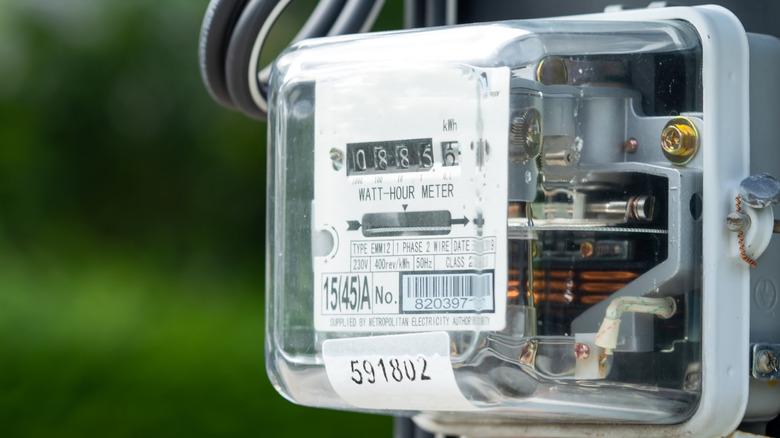The New Neighbor That Could Be Driving Up The Cost Of Your Utilities
Artificial intelligence requires the processing of massive amounts of data to accomplish even the smallest task, and that processing uses electricity. Lots of electricity ... which means the need for lots of new infrastructure to deliver that electricity, which could cost tens of billions of dollars. And because of the convoluted, and sometimes irrational, way that customers are charged for electricity, residents near those data centers MIGHT foot the bill for a disproportionate amount of that cost. Some estimates suggest that your electric bill could increase as much as 70 percent.
These price increases are most likely to affect power customers near new data centers being built, most of which are in Virginia, Texas, Georgia, and Arizona. Indeed, northern Virginia is the epicenter of a developing data center energy crisis. A study by the Jack Kemp Foundation shows that Loudoun County, Va., is home to data centers that already use twice as much power as the state's largest nuclear plant, suggesting that huge investments will be necessary to power all the planned data centers in the area. The trouble is that merely signaling the need for new investment doesn't speed up or lessen the cost of providing that additional capacity.
This problem isn't hypothetical, but is already affecting power pricing and decision-making. Per the Jack Kemp Foundation study, pricing for power capacity in markets in and around Virginia has already increased from $29 to $270 per megawatt-day (MW-day), and the capacity market price for Dominion Energy in Virginia increased from $29 to $444 per MW-day. This suggests that price increases somewhere between 25 and 70% will be necessary to provide all the necessary electricity, facilities, equipment, and other infrastructure required.
The scope of the electric power industry's shortfall
It's not all about data centers, either. Spending on manufacturing-related construction in 2023 was three times the average of the preceding decade. This trend is expected to continue due to trade protectionism and related subsidies targeted at expanding the U.S. semiconductor and alternative energy sectors. Meanwhile, large tech companies are projected to increase their capital expenditures by an average of 16%, suggesting strong growth. Wood Mackenzie analysts found 51 gigawatts (GW) of electricity capacity among data centers planned since January 2023, and the estimated power required by these planned data centers has doubled.
While the average demand for electricity is expected to grow 4-15% through 2029, that increase won't be spread around equally. Areas with new data centers or manufacturing facilities will see far greater increases in demand. "In most industries, demand growth of 2-3% per year would be easily managed and welcomed," said Chris Seiple, Wood Mackenzie's Vice Chairman of Energy Transition and Power & Renewables. "In the power sector, however, new infrastructure planning takes 5 to 10 years, and the industry is only now starting to plan for growth."
This spike in demand sneaked up on utilities and regulators. Demand for electricity outpaced GDP in the 1970s, 80s, and 90s, but for two decades, GDP growth far outstripped the demand for electricity. Now, the trend is expected to reverse again, driven mostly by data centers using power to run and cool computers running AI applications. All of this is exacerbated by the energy industry's inability to quickly add capacity, as well as government-mandated reductions in the amount of power created by using sources like coal.
Why these costs are being passed along to residential communities
Of course, not everything about increasing energy demands is bad. Some causes, like hardening utility facilities against events that decrease their reliability, directly benefit residential power customers. And obviously many communities welcome industry when it creates new jobs and commerce in an area. But, while costs are sometimes assigned to individual customers (like manufacturers and data centers directly), utility pricing is complex and often results in an irrational sharing of costs among residential, small/medium-sized business, and larger industrial/commercial customers. A lot of the expense involved in generating, transmitting, and distributing power comes from increased infrastructure costs, which are shared among all customers. These increases are necessary and can't be met with current infrastructure. Meanwhile, electricity shortfalls are often addressed by importing power from other providers, which generally isn't affected by rate-reduction strategies, and so tends to increase costs for all customers.
With excess power capacity declining and investments not keeping pace with demand, regulators will be forced to go along with rate increases that don't necessarily reflect the causes of the larger demand. Sometimes, such as when a new plant equates to great economic growth for an area, the shifting of costs from data centers and manufacturers to residents and small businesses might be deemed acceptable. In other cases, industries negotiate deals for better rates that specifically exclude responsibility for the capacity increases they entail, such as when "co-located" data centers and power plants use power without using the usual transmission channels and claim to, therefore, bear no responsibilities for the cost of that infrastructure.
Ways to mitigate rising energy costs in the home utilities
Unsurprisingly, some consumer advocates are up in arms about what was termed, in a Harvard Law School Environmental & Energy Law Program report, "wealth transfers from ratepayers to utility shareholders and Big Tech companies." While hypothetically guided by the cost causation principle, which asserts that the causes of increased costs should be the source of funding for those costs, in practice, costs are often distributed among residential ratepayers, who pay more per kilowatt-hour than the industries do.
All of this has spurred a flurry of new proposed state legislation intended to address rate structures that don't reflect their causes. Bills in California have been proposed to increase transparency about the power usage of AI operations; to set efficiency standards for AI data centers; and even to establish pricing structures specifically for data centers, potentially making allowances for job creation and the use of zero-emission sources of electricity. Bills in Virginia also support data center energy efficiency and seek to isolate residential customers from bearing the costs of new infrastructure. An Ohio bill seeks to force data centers to pay more of the costs they cause, while one in Oregon would prevent customers from bearing infrastructure cost increases.
While all of this might help residential electric customers avoid huge rate increases and would certainly force data center owners to pass costs along to their actual customers rather than to nearby residents, any political process is uncertain, and the surest strategies for saving money on their electric bills are to reduce power consumption and make use of home items that may decrease the costs of electric bills like solar power that decrease reliance on utility-provided electricity. If you are planning to move to an area and are concerned about what the electric bill may be at a certain address, try calling the power company that services the address, and they may be able to provide you with an approximation of what you can expect.



